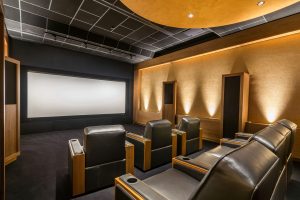Marble Cherubs
Want great acoustics? Get some statues and columns…
Not so much for speech, but for music nothing beats listening to an orchestral concert in one of the baroque halls built in the 16th through 18th centuries in Europe. Obviously the acoustics are great, but why do they sound (and look) so beautiful? Easy answer — they’ve got lots of cherubs and gargoyles and saints and virgins and columns, a mass of assorted marble statuary and support pillars which have an absorption coefficient of nuttin’ and a scattering coefficient of a bucket-load (acoustic-speak for not many scientific test results available from the mid-1600’s).
Millions of well-scattered reflections, bouncing around for a few seconds, make a lovely “envelope” for baroque ensemble music. Bach, Vivaldi, Hayden, and Handel all wrote music for chamber orchestras playing in these types of venues. Whether churches, chapels, chateaus, or castles, the profusion of diffusion was wonderfully friendly to the sound of this era’s musical performances.
This should tell us something about our own era’s music performance venues, as well as the rooms in which we listen to those performances — if you’d like to get a nicer “envelope” around the music you play, get some marble cherubs and columns, or at least a variety of spherical/cylindrical diffusors. Humans love spacious-sounding spaces, don’t love claustrophobic-sounding spaces, and are very happy in “enveloping” musical environments. Just sayin’…
















